Overexpression of wheat ferritin gene TaFER-5B enhances tolerance to heat stress and other abiotic stresses associated with the ROS scavenging

The yield of wheat (Triticum aestivum L.), an important crop, is adversely affected by heat stress in many regions of the world. However, the molecular mechanisms underlying thermotolerance are largely unknown.
This work proved that TaFER-5B plays an important role in enhancing tolerance to heat stress and other abiotic stresses associated with the ROS scavenging.
Unraveling the complexity of transcriptomic, metabolomic and quality environmental response of tomato fruit
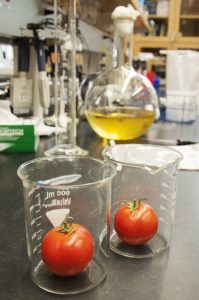 The environment has a profound influence on the organoleptic quality of tomato (Solanum lycopersicum) fruit, the extent of which depends on a well-regulated and dynamic interplay among genes, metabolites and sensorial attributes. The authors used a systems biology approach to elucidate the complex interacting mechanisms regulating the plasticity of sensorial traits.
The environment has a profound influence on the organoleptic quality of tomato (Solanum lycopersicum) fruit, the extent of which depends on a well-regulated and dynamic interplay among genes, metabolites and sensorial attributes. The authors used a systems biology approach to elucidate the complex interacting mechanisms regulating the plasticity of sensorial traits.
Comparative RNA-seq based transcriptomic analysis of bud dormancy in grape
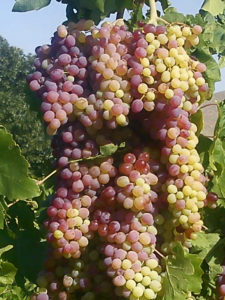 Bud dormancy is an important biological phenomenon of perennial plants that enables them to survive under harsh environmental circumstances. Grape (Vitis vinifera) is one of the most grown fruit crop worldwide; however, underlying mechanisms involved in grape bud dormancy are not yet clear. This work was aimed to explore the underlying molecular mechanism regulating bud dormancy in grape, which may pave the way for ultimate improvements in the grape industry.
Bud dormancy is an important biological phenomenon of perennial plants that enables them to survive under harsh environmental circumstances. Grape (Vitis vinifera) is one of the most grown fruit crop worldwide; however, underlying mechanisms involved in grape bud dormancy are not yet clear. This work was aimed to explore the underlying molecular mechanism regulating bud dormancy in grape, which may pave the way for ultimate improvements in the grape industry.
Genome-wide association analysis of seedling traits in diverse Sorghum germplasm under thermal stress
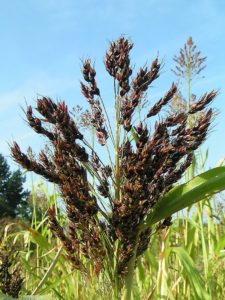 Climate variability due to fluctuation in temperature is a worldwide concern that imperils crop production. The need to understand how the germplasm variation in major crops can be utilized to aid in discovering and developing breeding lines that can withstand and adapt to temperature fluctuations is more necessary than ever.
Climate variability due to fluctuation in temperature is a worldwide concern that imperils crop production. The need to understand how the germplasm variation in major crops can be utilized to aid in discovering and developing breeding lines that can withstand and adapt to temperature fluctuations is more necessary than ever.
The authors analyzed the genetic variation associated with responses to thermal stresses in a sorghum association panel (SAP), representing major races and working groups, to identify single nucleotide polymorphisms (SNPs) that are associated with resilience to temperature stress in a major cereal crop.
De novo sequencing and comparative transcriptome analysis of the male and hermaphroditic flowers provide insights into the regulation of flower formation in andromonoecious Taihangia rupestris
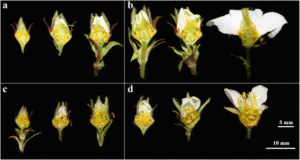 Taihangia rupestris is an andromonoecious plant species meaning it bears both male and hermaphroditic flowers within the same individual. However, the establishment and development of male and hermaphroditic flowers in andromonoecious Taihangia remain poorly understood, due to the limited genetic and sequence information. To investigate the potential molecular mechanism in the regulation of Taihangia flower formation, the authors used de novo RNA sequencing to compare the transcriptome profiles of male and hermaphroditic flowers at early and late developmental stages.
Taihangia rupestris is an andromonoecious plant species meaning it bears both male and hermaphroditic flowers within the same individual. However, the establishment and development of male and hermaphroditic flowers in andromonoecious Taihangia remain poorly understood, due to the limited genetic and sequence information. To investigate the potential molecular mechanism in the regulation of Taihangia flower formation, the authors used de novo RNA sequencing to compare the transcriptome profiles of male and hermaphroditic flowers at early and late developmental stages.
Cultivable gut bacteria provide a pathway for adaptation of Chrysolina herbacea to Mentha aquatica volatiles
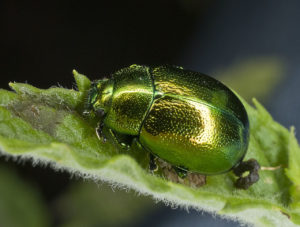
A chemical cross-talk between plants and insects is required in order to achieve a successful co-adaptation. In response to herbivory, plants produce specific compounds, and feeding insects respond adequately to molecules produced by plants. Here the authors show the role of the gut microbial community of the mint beetle Chrysolina herbacea in the chemical cross-talk with Mentha aquatica (or watermint).
The impact of drought on wheat leaf cuticle properties
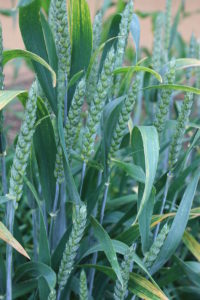 The plant cuticle is the outermost layer covering aerial tissues and is composed of cutin and waxes. The cuticle plays an important role in protection from environmental stresses and glaucousness, the bluish-white colouration of plant surfaces associated with cuticular waxes, has been suggested as a contributing factor in crop drought tolerance. However, the cuticle structure and composition is complex and it is not clear which aspects are important in determining a role in drought tolerance.
The plant cuticle is the outermost layer covering aerial tissues and is composed of cutin and waxes. The cuticle plays an important role in protection from environmental stresses and glaucousness, the bluish-white colouration of plant surfaces associated with cuticular waxes, has been suggested as a contributing factor in crop drought tolerance. However, the cuticle structure and composition is complex and it is not clear which aspects are important in determining a role in drought tolerance.
Therefore, the authors analyzed residual transpiration rates, cuticle structure and epicuticular wax composition under well-watered conditions and drought in five Australian bread wheat genotypes with contrasting glaucousness and drought tolerance.
Chloroplast proteome response to drought stress and recovery in tomato (Solanum lycopersicum L.)
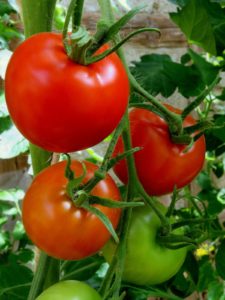 Drought is a major constraint for plant growth and crop productivity that is receiving an increased attention due to global climate changes. Chloroplasts act as environmental sensors; however, only partial information is available on stress-induced mechanisms within plastids.
Drought is a major constraint for plant growth and crop productivity that is receiving an increased attention due to global climate changes. Chloroplasts act as environmental sensors; however, only partial information is available on stress-induced mechanisms within plastids.
Here, the authors investigated the chloroplast response to a severe drought treatment and a subsequent recovery cycle in tomato through physiological, metabolite and proteomic analyses, giving an original overview on the role of chloroplast as environmental sensor by both coordinating the expression of nuclear-encoded plastid-localized proteins and mediating plant stress response.
An integrated RNAseq-1H NMR metabolomics approach to understand soybean primary metabolism regulation in response to Rhizoctonia foliar blight disease
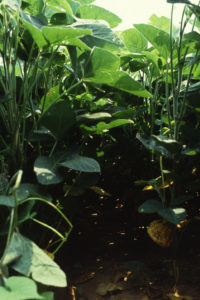 Rhizoctonia solani AG1-IA is a devastating phytopathogen causing Rhizoctonia foliar blight (RFB) of soybean worldwide with yield losses reaching 60%. Plant defense mechanisms are complex and information from different metabolic pathways is required to thoroughly understand plant defense regulation and function. Combining information from different “omics” levels such as transcriptomics, metabolomics, and proteomics is required to gain insights into plant metabolism and its regulation.
Rhizoctonia solani AG1-IA is a devastating phytopathogen causing Rhizoctonia foliar blight (RFB) of soybean worldwide with yield losses reaching 60%. Plant defense mechanisms are complex and information from different metabolic pathways is required to thoroughly understand plant defense regulation and function. Combining information from different “omics” levels such as transcriptomics, metabolomics, and proteomics is required to gain insights into plant metabolism and its regulation.
The authors studied fluctuations in soybean metabolism in response to R. solani infection at early and late disease stages using an integrated transcriptomics-metabolomics approach, focusing on the regulation of soybean primary metabolism and oxidative stress tolerance.
De novo transcriptome assembly from flower buds of dioecious, gynomonoecious and chemically masculinized female Coccinia grandis reveals genes associated with sex expression and modification
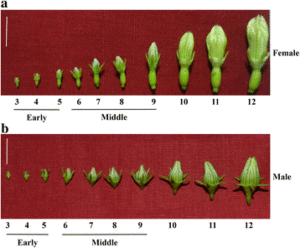 Coccinia grandis (ivy gourd), is a dioecious member of Cucurbitaceae having heteromorphic sex chromosomes. Chromosome constitution of male and female plants of C. grandis is 22A + XY and 22A + XX respectively. Earlier it has been reported that a unique gynomonoecious form of C. grandis (22A + XX) also exists in nature bearing morphologically hermaphrodite flowers (GyM-H). Additionally, application of silver nitrate (AgNO3) on female plants induces stamen development leading to the formation of morphologically hermaphrodite flowers (Ag-H) despite the absence of Y-chromosome. Due to the unavailability of genome sequence and the slow pace at which sex-linked genes are identified, sex expression and modification in C. grandis are not well understood.
Coccinia grandis (ivy gourd), is a dioecious member of Cucurbitaceae having heteromorphic sex chromosomes. Chromosome constitution of male and female plants of C. grandis is 22A + XY and 22A + XX respectively. Earlier it has been reported that a unique gynomonoecious form of C. grandis (22A + XX) also exists in nature bearing morphologically hermaphrodite flowers (GyM-H). Additionally, application of silver nitrate (AgNO3) on female plants induces stamen development leading to the formation of morphologically hermaphrodite flowers (Ag-H) despite the absence of Y-chromosome. Due to the unavailability of genome sequence and the slow pace at which sex-linked genes are identified, sex expression and modification in C. grandis are not well understood.
This study would enable identification of new sex-biased genes for further investigation of stamen arrest, pollen fertility, and AgNO3-mediated sex modification.
Comments